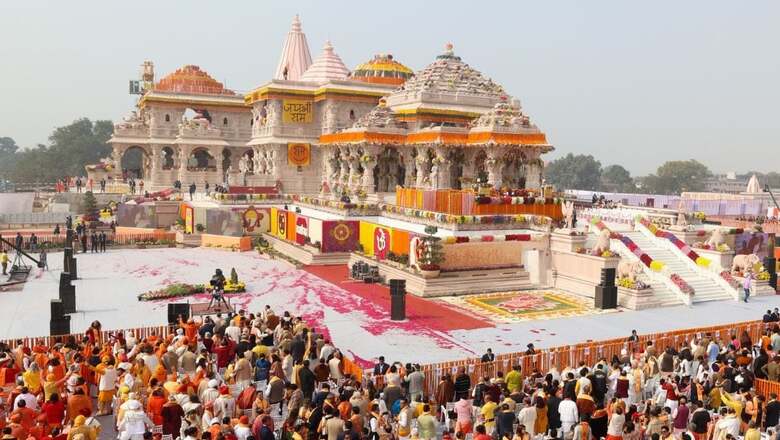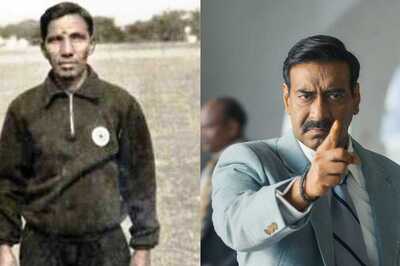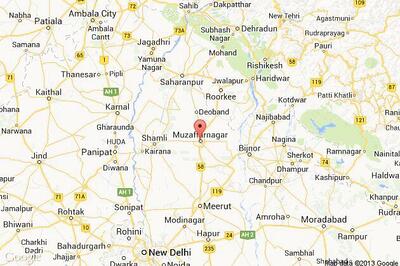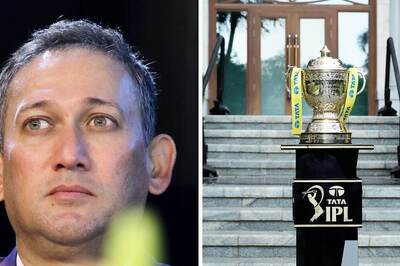
views
Munnibai Kushwaha, a plum seller in Vidisha, donated Rs 100, while Wasim Rizvi, former chairman of UP Shia Central Waqf Board contributed a sum of Rs 51,000 towards the construction of Shri Ram temple at Ayodhya. The celebration around the consecration ceremony of the Ram temple on January 22, 2024, cannot be dismissed merely as a political gimmick but reflects the sentiments of the Bharatvasis across caste, class, gender, and religion as seen in the most successful crowdfunding project.
A recent book on Ayodhya and Ram Mandir captures the journey of the Ayodhya movement by associating the reconstruction of temples as a mark of national pride and preservation of cultural heritage. The oft-quoted chaupai of Ramcharitmanas, “Hari Anant, Hari Katha Ananta” is how the book on Ayodhya by Swadesh Singh begins and aptly describes the umpteen narratives on the theme that has emerged in the public discourse of recent.
‘Ayodhya Ram Mandir: Bharat’s Quest for Ram-Rajya’ (2024, Rupa) is an insightful work endowed with literary, archaeological and historical information running through five chapters. Author Swadesh Singh presents the book as an account of the new Shri Ram Janmabhoomi temple movement in Ayodhya and the beliefs, practices and legends associated with it.

In the first chapter, the author meticulously describes the legends and history associated with Ayodhya and Shri Ram. The chapter also describes the narratives associated with Ayodhya through Jain literature and Buddhist Jataka tales. Highlighting the transcendental influence of Lord Ram in the cultural and religious domain in South Asia, Southeast Asia and Caribbean countries, Singh cites the example of the Chakri Dynasty of Thailand which adopted the title/name ‘Rama’ for its succeeding kings. It’s not just in India that we have Ramayana written in several languages/versions such as in Odia by Sarla Das and Kambar Ramayan in Tamil but countries across India also boast of several versions of Ramayana.
The book notes that Reamker (Cambodia), Kakawin Ramayan (Indonesia), Phra Lak Phra Lam (Laos), and Hikayat Seri Rome (Malaysia) as some of the popular versions of Ramayana in non-Indian languages, serving cultural, socio-educational purposes in these countries. This reiterates the universal significance of the teachings of Ramayana across cultural and national boundaries.
The strength of the book is the detailed accounts through facts, figures and testimonies to trace the journey of the 500-year-long Ayodhya movement. The segment that caught my attention in the book (chapter 2) was the various sources which prove that a mosque was built on the remains of a demolished temple in Ayodhya at the given site. These not only include sources like Tulsidas’ Dohashtaka, but also works in Persian and Urdu like Tarikh-i-Awadh, Diya-i-Akhtar, and Afzal-ut-Tawarikh.
Other significant sources include the reports of British archaeologist Alexander Cunningham in 1862-63 and the ‘Gazetteer of the province of Oudh’ prepared by W.C. Benett in 1878 which found that many columns of the temple were used in the construction of Babri masjid. Those interested in the legal dimension of the Ayodhya movement and the court cases may look up chapters 2 and 3.
Chapter 3 specifically documents the sequence of events that culminated in the historic 2019 Supreme Court judgement that gave a go-ahead to the construction of the temple at Ram Janmabhoomi in Ayodhya. Chapters 4 and 5 capture the developments that followed the 2019 judgement leading to the beginning of the construction of the Ram Temple and the grand transformation of Ayodhya in the process.
The fifth/last chapter envisions the efforts to bring Ayodhya on the tourist map through cultural and infrastructural innovations. This chapter, titled ‘Echoes of Treta in Ayodhya’, takes us on a virtual tour of the historical and cultural sites of Ayodhya including Buddhist and Jain architecture, reading which one will be compelled to go on a spiritual journey of the historic city/birth place of Ram Lalla.
As a concluding remark, the author views the construction of the Ram temple (the second homecoming of Lord Ram) not just as a symbol of the resurgence of Sanatana Dharma but also as a mark of national and civilisational rejuvenation to carry forth the universal message of Lord Ram transcending religions.
The author celebrates the absence of bloodshed following the 2019 Supreme Court judgement on Ayodhya as a mark of the success of democratic, constitutional methods to resolve disputes as well as a testimony to the atmosphere of peace and mutual respect in the country. The book weaves the 500-year-long story of the Ayodhya movement seamlessly to build a strong case for the ongoing euphoria around the Ram temple in Ayodhya.
The author teaches Political Science at Zakir Husain Delhi College, University of Delhi. She has done her PhD on ‘Political dynasties in electoral politics’ from the Centre for Political Studies, JNU. She has written extensively on socio-political issues for print media, academic journals and online platforms. Views expressed in the above piece are personal and solely that of the author. They do not necessarily reflect News18’s views.




















Comments
0 comment